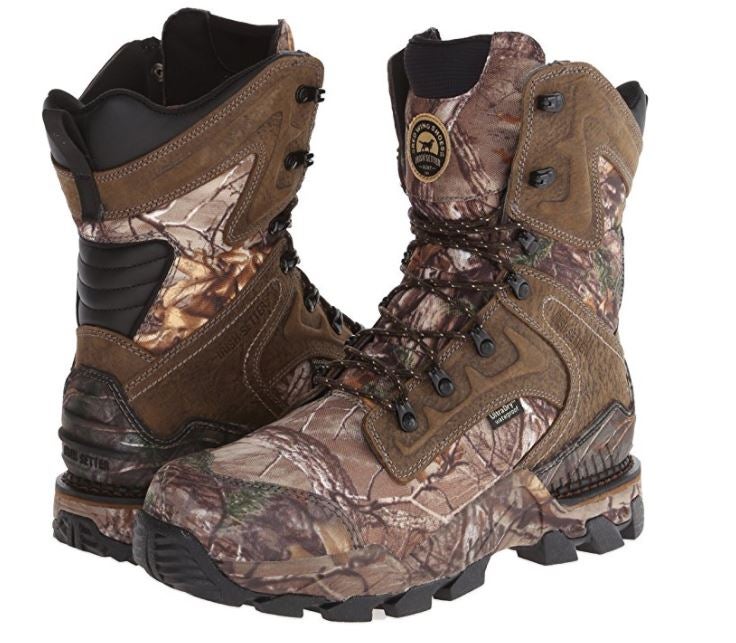The Ultimate Guide to Finding the Perfect Hunting Boots

When it comes to outdoor activities like hunting, having the right gear is essential. And one crucial piece of equipment that often gets overlooked is hunting boots. While they may not be the first thing that comes to mind when planning a hunting trip, having a pair of high-quality, durable boots can make all the difference in your comfort and overall experience out in the wilderness.
Hunting boots are specially designed to withstand the rigors of the hunt. They offer features such as waterproofing, insulation, and enhanced traction to keep you safe and comfortable in various terrains and weather conditions. Whether you're trekking through muddy swamps, climbing rocky slopes, or standing for hours in freezing temperatures, the right pair of hunting boots can provide the support and protection your feet need.
But with so many options available on the market, finding the perfect pair of hunting boots can seem overwhelming. That's why we've put together this ultimate guide to help steer you in the right direction. We'll explore the different types of hunting boots, the key factors to consider when choosing a pair, and some top recommendations to fit your specific needs. So, get ready to step up your hunting game with the perfect hunting boots!
1. Understanding Your Hunting Environment
When it comes to choosing the perfect hunting boots, it's essential to understand the environment in which you'll be hunting. Each hunting ground presents its own unique challenges and conditions, and having the right boots can make all the difference in your hunting experience.
Firstly, take into consideration the terrain you'll be traversing. Whether you'll be hunting in rocky mountains, dense forests, or open fields, knowing the type of terrain will help you determine the appropriate boots. For rugged and uneven terrains, opt for boots with sturdy soles and ankle support to provide stability and prevent injuries.
Next, think about the weather conditions specific to your hunting area. If you'll be hunting in cold climates, insulation becomes crucial. Look for hunting boots with thick insulation to keep your feet warm and comfortable during long hours spent outdoors. On the other hand, if you'll be hunting in hot and humid environments, prioritize breathability and moisture-wicking properties to keep your feet dry and prevent discomfort.
Furthermore, consider the water elements you might encounter during your hunting trips. If you'll be crossing streams, navigating marshy areas, or hunting near bodies of water, waterproof boots should be a top priority. Investing in hunting boots with reliable waterproofing capabilities will ensure that your feet stay dry even in wet conditions, preventing blisters and discomfort.
By understanding the unique characteristics of your hunting environment, you'll be able to choose hunting boots that match those conditions perfectly. Take these factors into account as you continue your search for the ultimate hunting boots, and get ready to take on your hunting adventures with confidence.
2. Choosing the Right Boot Material
When it comes to finding the perfect hunting boots, one of the most important considerations is the material they are made of. The right boot material can make a significant difference in terms of comfort, durability, and performance. Here are three key materials to consider:

Full-Grain Leather: Full-grain leather is a popular choice for hunting boots as it is known for its exceptional durability and water resistance. These boots are built to withstand rugged terrains and harsh conditions, making them a reliable option for avid hunters. The natural breathability of leather also helps to keep your feet comfortable and dry throughout your hunting adventures.
Synthetic Materials: In recent years, hunting boots made from synthetic materials have gained popularity among hunters. These materials, such as nylon and polyester, offer several advantages. They are often more lightweight than leather boots, providing greater agility and ease of movement. Synthetic boots also tend to dry faster, which can be beneficial in wet or humid environments. Additionally, dwights come at a more affordable price point compared to their leather counterparts.
Rubber: Rubber hunting boots are ideal for those who frequently hunt in wet or marshy areas. These boots are completely waterproof, ensuring that your feet stay dry even when trudging through streams or swamps. Rubber boots are also relatively easy to clean and maintain. However, it's important to note that they may not provide the same level of breathability and insulation as leather or synthetic options.
Each type of boot material has its own unique advantages, so it's crucial to consider your hunting environment and personal preferences when making a decision. By choosing the right material, you can enhance your overall hunting experience and ensure that your feet are comfortable and protected throughout your outdoor pursuits.
3. Selecting the Proper Fit
When it comes to finding the perfect hunting boots, ensuring the right fit is crucial. Ill-fitting boots can make even the most exciting hunt a tiresome experience. To avoid any discomfort or blisters, here are some key factors to consider when selecting the proper fit for your hunting boots.
Firstly, pay attention to sizing. Hunting boot sizes may vary between brands, so it's important to measure your feet and refer to the brand's size chart for guidance. Remember to measure both feet as they might not be the same size. Consider wearing the socks you plan to wear during your hunting trips when measuring for a more accurate fit.
Secondly, consider the width of the boots. Some individuals have wider or narrower feet, and choosing boots with the right width can significantly impact comfort. If your feet are wider, look for boots labeled with the letter "E" for extra width. Conversely, if you have narrower feet, opt for boots labeled with the letter "B" for a narrower fit.
Lastly, take into account the arch support. The ideal hunting boots will provide ample arch support to ensure stability and reduce fatigue during long hours of hunting. Look for boots with built-in arch support or consider adding aftermarket insoles for added comfort and support.
By considering these factors and finding the proper fit, you can ensure that your hunting boots will be comfortable and supportive throughout your hunting adventures. Take the time to try on different options, and don't hesitate to seek advice from experts or fellow hunters to find the perfect fit for your unique needs. Happy hunting!
